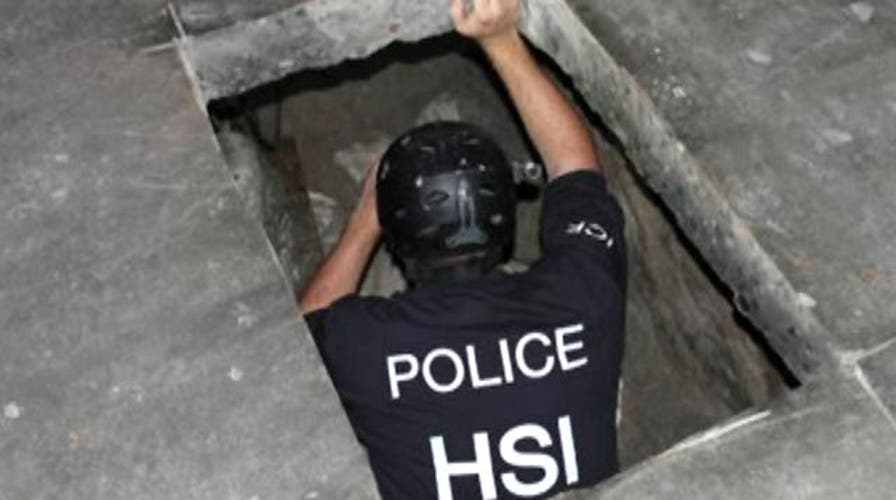Tucked inside one of a string of warehouses, hidden behind boxes of televisions and plastic three-wheel toys, under a concrete slab and down a 70-foot shaft, is a tunnel Mexican drug dealers hoped to use to move hundreds of pounds of marijuana and cocaine into the U.S.
But on Friday, agents for Immigration and Customs Enforcement announced Tuesday’s discovery of the tunnel and arrested the woman accused of overseeing its construction, 73-year-old Glennys "Gladys" Rodriguez, of Chula Vista, Calif. Authorities had been watching the warehouse for months.
“Here we are again, foiling cartel plans to sneak millions of dollars of illegal drugs through secret passageways that cost millions of dollars to build,” said U.S. Attorney Laura Duffy. “Going underground is not a good business plan. We have promised to locate these super tunnels and keep powerful drug cartels from taking their business underground and out of sight, and once again, we have delivered on that promise.”
[pullquote]
This was the sixth cross-border passageway discovered in the San Diego area in less than four years. A seventh was found Thursday nearby. If laid end-to-end, the seven tunnels would extend a distance of nearly two miles.
Agents from the San Diego Tunnel Task Force uncovered the two sophisticated smuggling tunnels in an area known as Otay Mesa, an industrial park surrounded by rolling hills, desert and several major freeways connecting the U.S. to Tijuana and large manufacturing plants south of the border.
The first tunnel, approximately 600 yards long, was discovered Tuesday evening based on evidence developed during a five-month probe by the task force. The passageway - equipped with lighting, a crude rail system and wooden trusses - exits inside a warehouse. The entrance to the tunnel was 2 1/2 square feet and led to a 15-foot walkway. At the end was a 70-foot vertical shaft equipped with a half-ton winch and pulley system to hoist contraband up into the warehouse.
Rental records show the warehouse was rented by Ignacio Ituarte, but the money was provided by his girlfriend, Rodriguez, according to a complaint filed by the U.S. Attorney's office Thursday. Rodriguez, who drives a white Cadillac, gave Ituarte $10,000 to lease the warehouse while the tunnel was constructed and $1,729 monthly thereafter.
Arrested Tuesday, Rodriguez told agents she owns a business that provides immigration services and prepares taxes and attempted to hide her connection to the warehouse, despite surveillance evidence to contrary. She is charged in a criminal complaint with conspiring with others to maintain a drug involved premises. The U.S. Attorney’s Office for the Southern District of California is prosecuting the case.
The second tunnel was detected Thursday morning. It also originates in Tijuana and stretches more than 700 yards. It is equipped with a multi-tiered electric rail system and an array of ventilation equipment.
“The discovery of these tunnels reaffirms yet again the vigilance and tenacity of our multi-agency task force,” said Derek Benner, special agent in charge of Homeland Security Investigations. “While technology certainly plays a part in our ongoing efforts, ultimately these investigations often owe more to the powers of observation and old fashioned detective work - and that was exactly what happened here.”
Agents cannot say how much drugs moved through the tunnels before they were discovered.
“Once again, the Tunnel Task Force has eliminated a multi-million dollar drug smuggling venture and have reduced it to nothing more than a colossal waste of money on the part of the drug cartels,” said Drug Enforcement Administration (DEA) San Diego Special Agent in Charge William Sherman. “Our goal is to not only shut these tunnels down before they become operational, but to ensure that the cartels backing these elaborate smuggling operations are investigated and prosecuted.”


